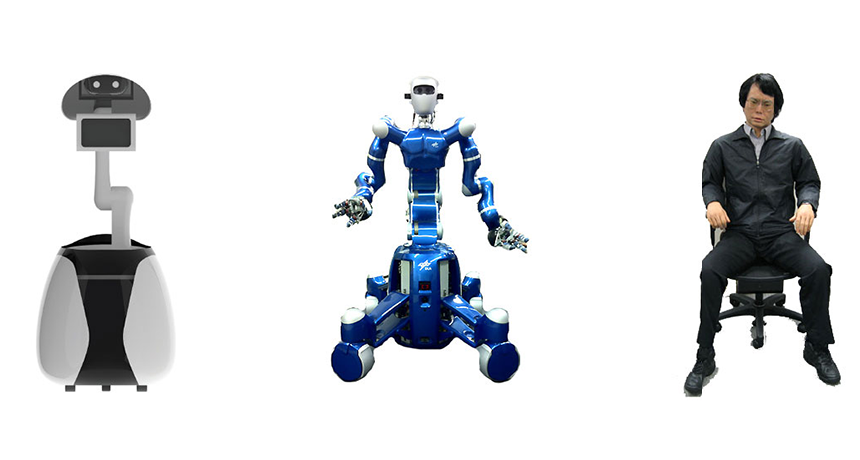This brain region may make lifelike robots creep you out
Bots that are almost, but not quite, human trigger different brain activity

Very realistic humanlike robots, like the one on the right, are often perceived as eerie. Activity in a region of the brain that makes social judgments may be responsible for these uneasy feelings.
A.M. Rosenthal-vonder Pütten et al/J. Neuroscience 2019
Robots and animated characters that look too much like real people can be creepy. A new analysis of brain scans may explain why.
People often like robots better the more they look like real people, past studies have shown. But only up to a point. Figures that look almost, but not quite, human can make people feel uneasy. And that in turn may affect how people react to such characters. Researchers want to better understand the brain pathways that cause this feeling. That could help designers create less unnerving androids. (Androids are robots made to look very humanlike.)
Fabian Grabenhorst is a neuroscientist at the University of Cambridge in England. He studies how the brain responds to others in social situations. He led the new study to understand what’s behind that creeped-out feeling.
He and his colleagues recruited 21 volunteers to lay in a brain scanner. The scanner uses magnets to measure blood flow to different parts of the brain. Blood flow can rise or fall in different areas as the brain does a task. Those changes help show which brain regions are most active during that task. This process is called fMRI, or functional magnetic resonance imaging.
The researchers measured the participants’ brain activity as they did two tasks. In each one, participants viewed pictures of people and humanoid robots. The robots ranged from very machine-like to nearly human. Some of the photos of people were edited to slightly distort their features. These were called “artificial humans.” They had a grayish skin tone and unnaturally smooth skin. They were meant to mimic super realistic-looking robots.
First, participants rated how likable each figure was. They also said how human each one looked.
Next, participants viewed pairs of the pictures. They were told each pictured figure had a gift to offer them. Some of the possible gifts were desirable (such as a movie ticket). Others were not (dishwashing soap). The participants didn’t know which character would give which gift. But for each pair of pictures, they had to choose who they would rather get a gift from. That was used to assess how much the participants would trust each figure’s choices.
Not quite human
As in past studies, participants rated more humanlike characters as more likable overall. But this trend broke down for artificial humans. Despite being the most humanlike of the unnatural options, these were rated the least likable. A similar gap emerged in participants’ judgments about which figures were more trustworthy gift-givers.
Those reactions mirrored activity in a part of the brain involved in making social decisions. It is called the ventromedial prefrontal cortex, or VMPFC. It is located in the front of the brain just behind the eyes. The VMPFC was more active when participants viewed more humanlike pictures. But activity dipped in response to artificial humans. And that drop was largest in people who reported the strongest dislike for artificial humans. Those findings suggest that this region of the brain underpins the uneasy feeling, the researchers say. They described the results online July 1 in the Journal of Neuroscience.
But this study may not directly link chills up your spine to VMPFC activity, says Karl MacDorman. He studies human-computer interactions at Indiana University in Indianapolis. That’s because being judged as unlikable or a bad gift-giver doesn’t always make something eerie.
Disney villains, for example, may not look all that likable or trustworthy. But they don’t necessarily come off as creepy, MacDorman points out. A future study could look for links between brain activity and how weirded-out people feel when they see different humanoids. That might give more info than how much they like or dislike these figures.
If the VMPFC is behind these heebie-jeebies, that may be good news for android designers and animators. Social experiences can change how the VMPFC reacts, says Grabenhorst. So good interactions with a robot that seemed creepy at first may make it seem less weird over time.







